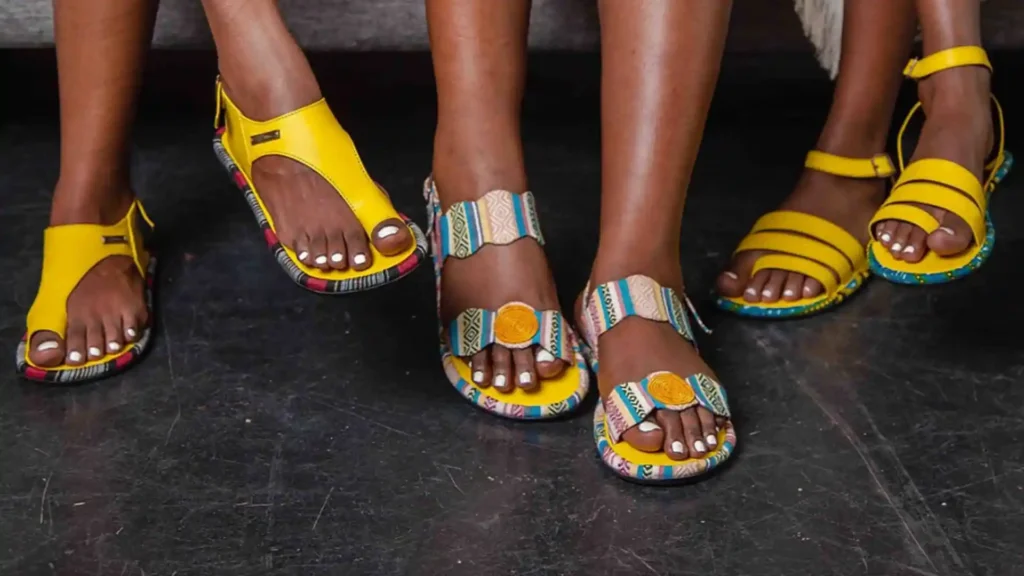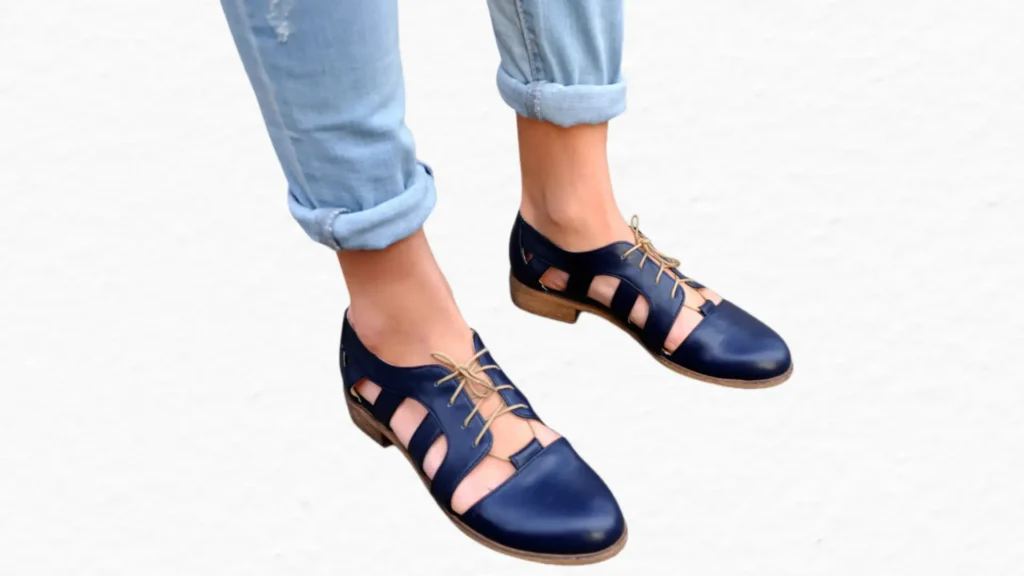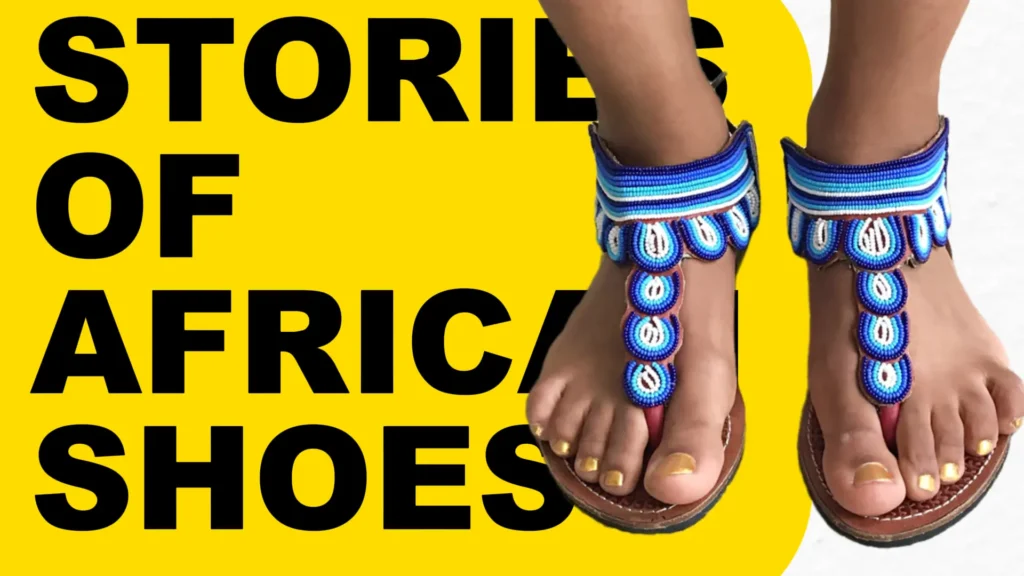African ceremony, where colors burst, drums echo, always tells a story. Have you ever noticed the shoes people wear?
They are not just for walking. Footwear in traditional African ceremonies holds deep meaning. It reflects culture, identity, and respect for ancestors.
The Importance of Footwear in African Culture
Footwear is more than practical in African ceremonies. It carries cultural weight. Shoes link people to their heritage. They show respect for sacred moments.
In many traditions, going barefoot is a sign of humility. For instance, in Yoruba ceremonies in Nigeria, people remove shoes to honor deities. Bare feet show purity and a bond with the earth.
However, wearing specific shoes can display status. Kings and chiefs wear ornate sandals. These are often made with leather, beads, or even gold. In Ghana, Akan chiefs wear ahenema slippers. These are decorated with intricate patterns. They symbolize royalty and authority.
Footwear also highlights gender and social roles. Women often wear colorful, beaded sandals. Men may wear simpler, sturdy leather ones. These differences reflect community values. A pair of shoes can tell you someone’s role, rank, or even their story.
Materials Used in Traditional Footwear
The materials for ceremonial footwear are chosen with care. They reflect the environment and cultural values. Leather is widely used. It is strong and shows skilled craftsmanship.
In East Africa, Maasai people make sandals from cowhide. The leather is treated and shaped by hand.
Beads are another key material. They add vibrant colors and patterns. In Southern Africa, Zulu women create beaded sandals. Each pattern has a meaning.
Some show love or community unity. Others mark milestones like weddings or births.
Plant-based materials are common too. In West Africa, raffia from palm trees is woven into sandals. Raffia is light and flexible. It is perfect for dances and festivals. In some regions, bark or grass is used for eco-friendly shoes.
Rare materials are reserved for special occasions. In Ethiopia, royal families once wore shoes with gold or silver threads. These shoes were symbols of wealth.
In Morocco, Berber artisans use silk for ceremonial slippers. The silk is dyed with natural colors from plants.
Regional Variations in Footwear
Africa’s diversity shines through its footwear. Each region has unique styles and traditions. Let’s explore some examples.
West Africa is known for vibrant footwear. In Nigeria, Yoruba people wear asọ oke shoes for weddings. These match the couple’s woven outfits. The bright colors show joy. In Mali, Dogon people wear simple leather sandals for rituals.
These are practical for rocky paths but sacred for ceremonies. They honor ancestors.
In Senegal, Wolof women wear beaded slippers for naming ceremonies. The slippers are decorated with cowrie shells. Cowries symbolize prosperity. These shoes are passed down through generations.
East African footwear suits nomadic lifestyles. Maasai warriors in Kenya and Tanzania wear akala sandals. These are made from recycled car tires.
The rubber is durable for long walks. During ceremonies, beads are added to show age or rank.
In Uganda, Baganda people wear barkcloth shoes for coronations. Barkcloth comes from fig trees. It is soft and eco-friendly. These shoes are worn by chiefs to show unity with nature.
Kikuyu people in Kenya often go barefoot during initiations. Bare feet connect them to the land. Elders bless the ground first. Walking barefoot honors this blessing.
Southern African footwear is artistic. Zulu dancers in South Africa wear izimbadada sandals. These are light and beaded. They allow fast dance moves. The beads shine, enhancing the performance.
In Zimbabwe, Shona people wear plain leather sandals for funerals. The simplicity shows mourning. Bright colors are avoided to respect the solemn mood.
In Botswana, San people wear soft antelope hide sandals. These are quiet and flexible. They are worn during healing dances to connect with spirits.
North African footwear blends African and Arab styles. In Morocco, Berber brides wear embroidered slippers. These are made of silk or leather.
Silver threads form patterns symbolizing fertility. In Algeria, Tuareg men wear pointed leather shoes for festivals. The points curl upward, a nod to ancient designs.
In Egypt, Coptic Christians wear palm-leaf sandals for religious events. These simple shoes reflect humility. They echo sandals from biblical times.
In Central Africa, footwear is practical yet meaningful. In the Democratic Republic of Congo, Luba people wear raffia sandals for initiations. The sandals are dyed with red earth. Red symbolizes life and strength.
In Cameroon, Bamileke chiefs wear beaded slippers. The beads form geometric patterns. These shoes are heavy, showing the chief’s responsibility to the community.
Symbolism of Footwear in Ceremonies
Footwear carries rich symbolism. It marks life stages. Children often go barefoot, symbolizing innocence. Adults wear sandals to show maturity. In rites of passage, new shoes mark the transition. For example, in Kenya, Luo boys receive leather sandals after circumcision. The sandals signify manhood.
In weddings, footwear plays a big role. Among the Igbo in Nigeria, brides get new sandals from their families. The shoes wish her strength in her new life. In Ghana, Akan brides wear gold-decorated sandals. Gold shows wealth and blessings.
In funerals, footwear shows respect. In some cultures, mourners go barefoot. This honors the sacred moment. In others, special shoes are worn. In Ethiopia, Amhara mourners wear plain black sandals. Black expresses grief.
Footwear can also protect spiritually. In South Africa, Sangoma healers wear beaded shoes with charms. The charms ward off evil spirits. In Benin, Vodun priests wear white sandals. White symbolizes purity and divine connection.
Dance is vital in African ceremonies. Footwear enhances the experience. It must be light and durable. It also adds visual appeal.
In Ghana, Ewe dancers wear raffia sandals. These make a rhythmic sound. The sound blends with drumbeats, enriching the performance. In Nigeria, Igbo masquerade dancers wear wooden clogs. The clogs create loud stomps, adding drama.
In East Africa, Maasai jumping dances need strong sandals. Akala sandals protect feet during leaps. Beads catch the light, making the dance vibrant.
In Southern Africa, San trance dances use soft leather sandals. These are silent, letting dancers focus on the spiritual journey. In contrast, Zulu war dances use heavy beaded sandals. The weight adds power to each step.
The Role of Craftsmanship
Crafting ceremonial footwear is an art. Artisans are highly respected. They pass skills through generations. In Nigeria, Yoruba shoemakers carve leather with wooden tools. Each pair is unique. The process takes days.
In South Africa, Zulu women bead sandals with tiny needles. A single sandal can take weeks. The patterns tell stories, like a family’s history or a bride’s journey.
In Ethiopia, Amhara weavers dye raffia with plant-based colors. The colors come from indigo or ochre. This keeps traditions sustainable.
In Morocco, Berber artisans embroider slippers with silver thread. They use ancient looms. The work requires precision and patience.
Communities are working to save traditional footwear. In Kenya, Maasai artisans teach youth to make akala sandals. Workshops keep the craft alive. In South Africa, Zulu beading festivals promote the art. Artisans sell to tourists, supporting their families.
Museums play a role. In Nigeria, museums display Yoruba asọ oke shoes. They educate visitors about their history. In Ghana, exhibitions showcase ahenema slippers. This inspires cultural pride.
Governments and NGOs help too. In Ethiopia, craft programs train young artisans. They learn to weave raffia and dye leather. In Morocco, cooperatives support Berber women. They sell embroidered slippers globally.
Footwear in traditional African ceremonies is a treasure. It carries history, identity, and spirituality.




